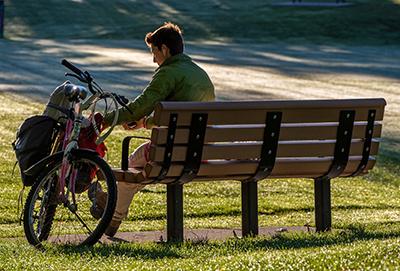Water that goes down any drain in your home or business—dishwashers, washing machines, sinks, showers, and toilets—enters the municipal sanitary sewer system and ends up at the Kamloops Sewage Treatment Centre (KSTC). Biosolids are the nutrient-rich organic materials resulting from the wastewater treatment process.
Residents from the City of Kamloops and Tk’emlúps te Secwépemc produce an average of 12,500 bulk tonnes of biosolids every year through the treatment process at the KSTC. Currently, these biosolids are mixed with fibre supplements then transported to the Ingerbelle Compost Facility where they are treated and turned into Class A compost. Ingerbelle compost meets the strict requirements of the Organic Matter Recycling Regulation (OMRR) and is permitted for retail distribution, although it is not currently available in stores. Nature's Gold and Ogogrow are examples of Class A compost created from biosolids.
The composting process destroys pathogens and weed seeds, reduces the bulk volume of organic materials, and creates an odour-free finished product that is used to enhance soil fertility, stability, and health. The compost process involves a careful interplay between a number of factors, which include particle size, moisture content, oxygen flow, temperature, and feedstock and nutrient balance.
Composting biosolids to produce a soil product was one of the technologies approved by Council for consideration in the City’s long-term biosolids management strategy, and supports the goals identified for wastewater management outlined in the City's Sustainable Kamloops Plan. Learn more about the methodology and process for developing our long-term biosolids management strategy at Let's Talk Kamloops.



